Related Research Articles

The Foresight Institute (Foresight) is a San Francisco-based research non-profit that promotes the development of nanotechnology and other emerging technologies, such as safe AGI, biotech and longevity.
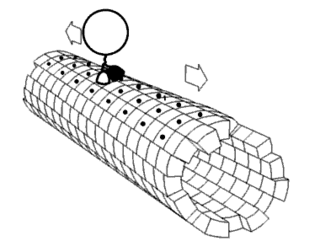
Molecular nanotechnology (MNT) is a technology based on the ability to build structures to complex, atomic specifications by means of mechanosynthesis. This is distinct from nanoscale materials. Based on Richard Feynman's vision of miniature factories using nanomachines to build complex products, this advanced form of nanotechnology would make use of positionally-controlled mechanosynthesis guided by molecular machine systems. MNT would involve combining physical principles demonstrated by biophysics, chemistry, other nanotechnologies, and the molecular machinery of life with the systems engineering principles found in modern macroscale factories.
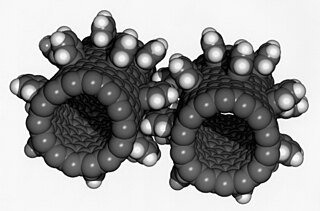
Nanotechnology is the manipulation of matter with at least one dimension sized from 1 to 100 nanometers (nm). At this scale, commonly known as the nanoscale, surface area and quantum mechanical effects become important in describing properties of matter. This definition of nanotechnology includes all types of research and technologies that deal with these special properties. It is common to see the plural form "nanotechnologies" as well as "nanoscale technologies" to refer to research and applications whose common trait is scale. An earlier understanding of nanotechnology referred to the particular technological goal of precisely manipulating atoms and molecules for fabricating macroscale products, now referred to as molecular nanotechnology.

James Kazimierz Gimzewski FRS FREng FInstP is a Scottish physicist of Polish descent who pioneered research on electrical contacts with single atoms and molecules and light emission using scanning tunneling microscopy (STM).

The University of Liège, or ULiège, is a major public university of the French Community of Belgium founded in 1817 and based in Liège, Wallonia, Belgium. Its official language is French.

The nanocar is a molecule designed in 2005 at Rice University by a group headed by Professor James Tour. Despite the name, the original nanocar does not contain a molecular motor, hence, it is not really a car. Rather, it was designed to answer the question of how fullerenes move about on metal surfaces; specifically, whether they roll or slide.
The history of nanotechnology traces the development of the concepts and experimental work falling under the broad category of nanotechnology. Although nanotechnology is a relatively recent development in scientific research, the development of its central concepts happened over a longer period of time. The emergence of nanotechnology in the 1980s was caused by the convergence of experimental advances such as the invention of the scanning tunneling microscope in 1981 and the discovery of fullerenes in 1985, with the elucidation and popularization of a conceptual framework for the goals of nanotechnology beginning with the 1986 publication of the book Engines of Creation. The field was subject to growing public awareness and controversy in the early 2000s, with prominent debates about both its potential implications as well as the feasibility of the applications envisioned by advocates of molecular nanotechnology, and with governments moving to promote and fund research into nanotechnology. The early 2000s also saw the beginnings of commercial applications of nanotechnology, although these were limited to bulk applications of nanomaterials rather than the transformative applications envisioned by the field.
The Feynman Prize in Nanotechnology is an award given by the Foresight Institute for significant advances in nanotechnology. Two prizes are awarded annually, in the categories of experimental and theoretical work. There is also a separate challenge award for making a nanoscale robotic arm and 8-bit adder.
The following outline is provided as an overview of and topical guide to nanotechnology:

Chad Alexander Mirkin is an American chemist. He is the George B. Rathmann professor of chemistry, professor of medicine, professor of materials science and engineering, professor of biomedical engineering, and professor of chemical and biological engineering, and director of the International Institute for Nanotechnology and Center for Nanofabrication and Molecular Self-Assembly at Northwestern University.

Mark A. Ratner is an American chemist and professor emeritus at Northwestern University whose work focuses on the interplay between molecular structure and molecular properties. He is widely credited as the "father of molecular-scale electronics" thanks to his groundbreaking work with Arieh Aviram in 1974 that first envisioned how electronic circuit elements might be constructed from single molecules and how these circuits might behave.
Nanosurf AG, headquartered in Liestal, Switzerland, is a developer, manufacturer and supplier of nano-microscopes for industrial and academic research, as well as for educational purposes. Nanosurf's atomic force microscopes (AFM) and scanning tunneling microscopes (STM) are used for metrological surface inspections and for the visualization of structures, and material properties on the nanometer scale.
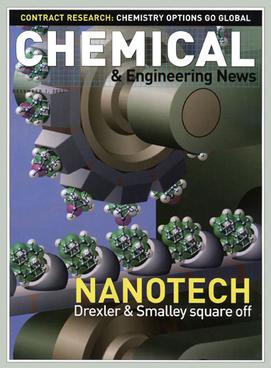
The Drexler–Smalley debate on molecular nanotechnology was a public dispute between K. Eric Drexler, the originator of the conceptual basis of molecular nanotechnology, and Richard Smalley, a recipient of the 1996 Nobel prize in Chemistry for the discovery of the nanomaterial buckminsterfullerene. The dispute was about the feasibility of constructing molecular assemblers, which are molecular machines which could robotically assemble molecular materials and devices by manipulating individual atoms or molecules. The concept of molecular assemblers was central to Drexler's conception of molecular nanotechnology, but Smalley argued that fundamental physical principles would prevent them from ever being possible. The two also traded accusations that the other's conception of nanotechnology was harmful to public perception of the field and threatened continued public support for nanotechnology research.

NanoWorld is the global market leader for tips for scanning probe microscopy (SPM) and atomic force microscopy (AFM). The atomic force microscope (AFM) is the defining instrument for the whole field of nanoscience and nanotechnology. It enables its users in research and high-tech industry to investigate materials at the atomic scale. AFM probes are the key consumable, the “finger” that enables the scientist to scan surfaces point-by-point at the atomic scale. Consistent high quality of the scanning probes is vital for reproducible results.

Dame Molly Morag Stevens is Professor of Biomedical Materials and regenerative medicine and Research Director for Biomedical Materials Sciences in the Institute of Biomedical Engineering at Imperial College London.
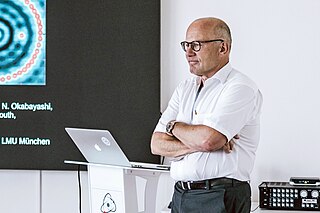
Franz Josef Gießibl is a German physicist and university professor at the University of Regensburg.
Gustavo E. Scuseria is the Robert A. Welch Professor of Chemistry, Professor of Physics & Astronomy and Professor of Materials Science & NanoEngineering at Rice University, Houston, TX. He is also editor-in-chief of the Journal of Chemical Theory and Computation. Scuseria earned his PhD from the University of Buenos Aires in 1983 and conducted post-doctoral work at the University of California, Berkeley (1985–1987) and the University of Georgia (1987–1989) prior to joining the chemistry faculty at Rice University in 1989.

Sergei V. Kalinin is the Weston Fulton Professor at the Department of Materials Science and Engineering at the University of Tennessee-Knoxville.
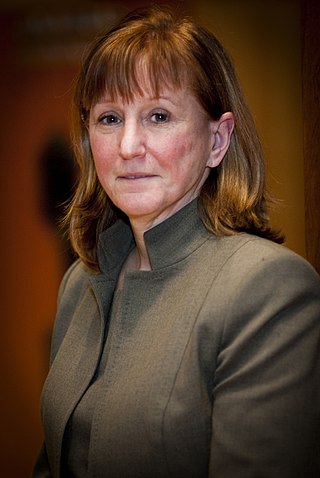
Dawn Austin Bonnell is the Senior Vice Provost for Research at the University of Pennsylvania. She has previously served as the Founding Director of the National Science Foundation Nano–Bio Interface Center, Vice President of the American Ceramic Society and President of the American Vacuum Society. In 2024, she was elected to the American Philosophical Society.
Montserrat Calleja Gómez is a Spanish physicist who specializes in Bionanomechanics. She is currently a research professor at the Institute of Micro and Nanotechnology in Madrid, Spain.
References
- 1 2 "Anne-Sophie Duwez, winner of the Feynman Prize in Nanotechnology". www.molsys.uliege.be. 2021-12-10. Retrieved 2024-05-16.
- ↑ "Probing Synthetic Molecular Machines with AFM | Anne-Sophie Duwez, University of Liege". Foresight Institute. Retrieved 2024-05-16.
- 1 2 3 "Foresight Institute Announces 2021 Feynman Prize Winners". Foresight Institute. Retrieved 2024-05-16.
- 1 2 3 4 5 "Anne-Sophie Duwez". www.nanochem.uliege.be. Retrieved 2024-05-16.
- 1 2 3 "Professor Anne-Sophie Duwez". NuNano AFM Probes. 2021-11-16. Retrieved 2024-05-16.